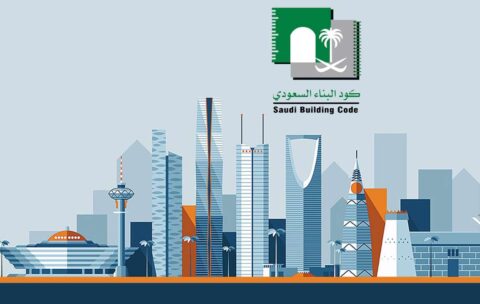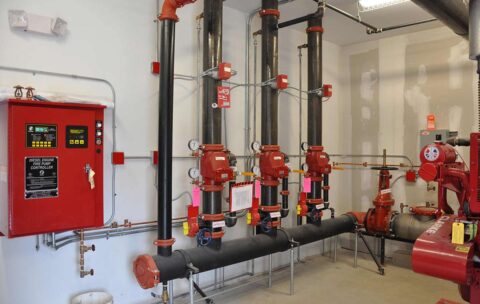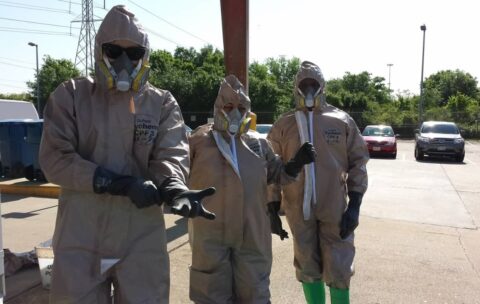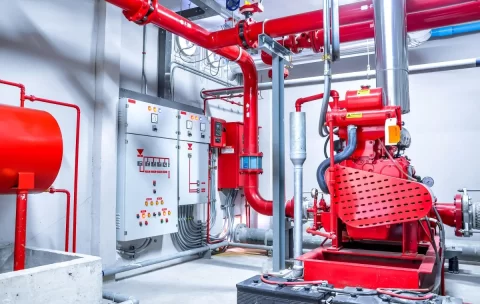Accident Investigation
This course focuses on the fundamentals and techniques of investigating …
What you'll learn
Define the key terms used in accident investigation.
Gather and analyze various data to determine the accurate sequence of events in an accident.
Identify the main factors involved in accidents and their significance.
Examine the interaction between hazards and human behaviors.
Utilize different tools available to safety professionals for conducting investigations.
Recognize the importance of accident investigations in overall safety programs.
Evaluate and develop a personal or company investigation base for safety through written and oral communication.
Fire Investigation
This course is for individuals with fire-fighting experience who want …
What you'll learn
Define the concept of origin and cause investigation and explain its purpose.
Describe a systematic approach to investigating a fire and explain how the scientific method is applied in the investigation process.
Explain the requirements for documenting a fire scene.
Discuss the importance of fire scene photography and the techniques involved.
Demonstrate how to conduct an initial investigation at a fire scene as part of a team.
Identify reliable sources of information for fire scene investigations.
Express the recommended procedural elements for conducting interviews.
Narrate the legal and liability issues related to fire scene investigations, course procedures, and testifying.
Saudi Fire Code, SBC801
The Saudi Building Code course introduces the basics of Life …
What you'll learn
Recognize the importance of Life Safety Principles based on SBC201 and SBC801.
List the different Occupancy Classifications and Sub-Classifications.
Locate a variety of requirements for the three parts of Means of Egress.
Implement Means of Egress Awareness Systems with their ITM Program.
Compute for the Occupant Load and Egress Capacity.
Navigate the requirements for HazMats' safety with the Saudi Fire Code, SBC801.
Fire Protection Systems Designing & Layout
The customized program is designed to span for a duration …
What you'll learn
Express how the fire signatures alter the choice of an automatic detection system.
Evaluate the necessary documentation for newly designed fire detection and alarm systems.
Discuss the design of fire detection systems, including selection, coverage, building construction, and spacing.
Apply the concept of fire alarm notification appliances, including selection, coverage, building requirements, spacing, and placement.
Demonstrate how to calculate battery de-rating, battery capacity, and voltage drop of NAC circuits.
Identify the appropriate type of sprinkler system and its installation requirements.
Determine the water density of sprinklers based on occupancy classification and commodities in healthcare settings.
Calculate the water demand for the most remote area, determine tank size, and estimate the required pressure and flow rate for a fire pump.
Collect and evaluate all plans and calculations for water-based sprinkler systems.
Verify the proper design and installation of both the fire alarm signaling system and the sprinkler system through plan examination, noncompliance determination, and necessary corrections.
Certified Fire Inspector, CFI-I
The course is an introduction to those who are seeking …
What you'll learn
Recognize the social responsibility and roles that fall on the shoulders of the fire inspector.
List down the accreditation and exam requirements for the fire inspector.
Use the best means and methods to browse the CFI-related NFPA standards.
Comprehend the fire behavior and life safety & property essential requirements.
Highlight the minimum occupational safety requirements and tools used in the inspections.
Construction Safety
This course offers comprehensive safety procedures for individuals involved in …
What you'll learn
Relate to the history of OSHA and construction safety topics.
Lead safety and recordkeeping control.
Assess various jobs for the proper PPE.
Value the work permit system and Lock-out Tag-out procedure.
Discuss the requirements of ladders, stairways, and scaffolding in the workplace.
Express the requirements of the fall protection program.
Detail the safety requirements of excavation and confined spaces.
Explain how to establish an electrically safe environment.
Create a safe culture for the welding and cutting activities.
Adhere to the safe storage and handling of materials.
Inspection, Testing, and Maintenance of Water-Based Fire Protection Systems
This course offers a basic understanding of how the new …
What you'll learn
Explain the scope and purpose of NFPA 25 and how it relates to other standards.
Express the process for managing system impairments.
Identify important inspection points such as sprinklers, piping, hangers, fire pumps, and valves.
Identify the roles and responsibilities of different stakeholders, including the owner, facility manager, service provider, insurance representative, and AHJ (Authority Having Jurisdiction).
Water-based Fire Protection System Plans Review
This course covers the knowledge and skills needed to assess …
What you'll learn
By the end of the course, learners will have the ability to review and assess the adequacy of fire sprinkler, pump, and standpipe plans and calculations based on nationally recognized design and installation standards.









